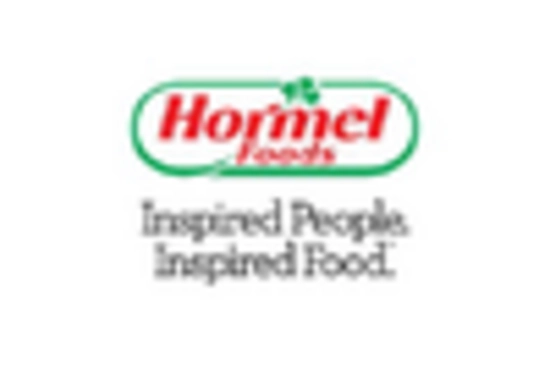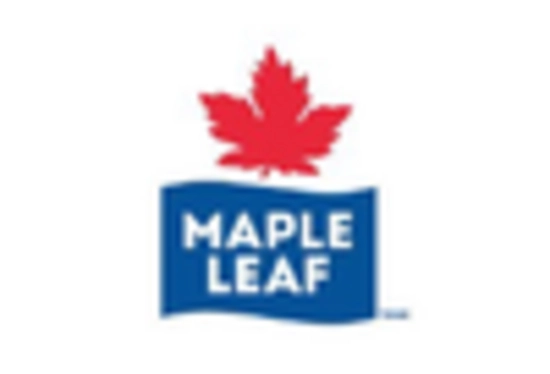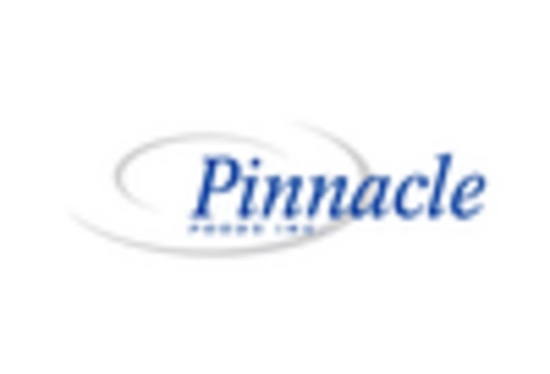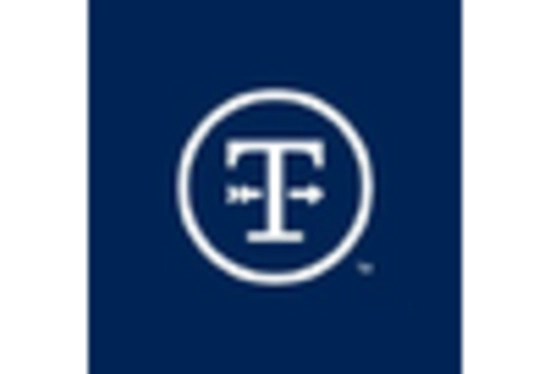E-commerce Growth
The rapid expansion of e-commerce is reshaping the Processed Meat Packaging Market, as more consumers turn to online shopping for their food needs. This shift necessitates packaging solutions that ensure product safety during transit and maintain freshness upon delivery. In 2025, the e-commerce sector is projected to continue its upward trajectory, prompting manufacturers to innovate packaging designs that cater specifically to online sales. This includes tamper-proof seals and insulated packaging to preserve product quality. The rise of e-commerce not only influences packaging requirements but also opens new avenues for growth within the processed meat sector, as brands adapt to the changing retail landscape.
Health and Wellness Trends
The growing awareness of health and wellness among consumers is a pivotal driver in the Processed Meat Packaging Market. As individuals become more health-conscious, there is an increasing demand for packaging that highlights nutritional information and promotes healthier options. In 2025, the market is anticipated to see a rise in demand for packaging that emphasizes low-fat, organic, and preservative-free processed meats. This trend is influencing manufacturers to adopt packaging solutions that not only preserve product quality but also communicate health benefits effectively. Consequently, the processed meat packaging sector is adapting to these consumer preferences, which may lead to a more competitive landscape as brands strive to differentiate themselves through health-oriented packaging.
Sustainability Initiatives
Sustainability is emerging as a critical driver in the Processed Meat Packaging Market, as consumers increasingly favor environmentally friendly products. The demand for sustainable packaging solutions is prompting manufacturers to explore biodegradable and recyclable materials. In 2025, the market is likely to witness a significant shift towards packaging that minimizes environmental impact while maintaining product safety and quality. This trend aligns with broader societal movements towards sustainability, compelling brands to adopt eco-friendly practices. As a result, the processed meat packaging sector is expected to grow, driven by the need to meet consumer expectations for responsible sourcing and waste reduction.
Rising Demand for Convenience Foods
The increasing consumer preference for convenience foods is a notable driver in the Processed Meat Packaging Market. As lifestyles become busier, consumers are gravitating towards ready-to-eat and easy-to-prepare meal options. This trend is reflected in the packaging sector, where innovative solutions are being developed to enhance product accessibility and shelf life. In 2025, the demand for convenience foods is projected to grow, with a significant portion of the processed meat sector adapting to these consumer needs. The packaging industry is responding by creating user-friendly designs that facilitate quick consumption while maintaining product integrity. This shift not only caters to consumer preferences but also drives sales in the processed meat sector, indicating a robust growth trajectory for the packaging market.
Technological Advancements in Packaging
Technological innovations are transforming the Processed Meat Packaging Market, leading to enhanced product preservation and safety. Advanced packaging technologies, such as vacuum sealing and modified atmosphere packaging, are becoming increasingly prevalent. These methods extend the shelf life of processed meats, thereby reducing food waste and improving consumer satisfaction. In 2025, the market is expected to witness a surge in the adoption of smart packaging solutions that incorporate sensors to monitor freshness and quality. This technological evolution not only meets regulatory standards but also aligns with consumer expectations for transparency and quality assurance. As a result, the processed meat packaging sector is likely to experience significant growth driven by these advancements.


















Leave a Comment